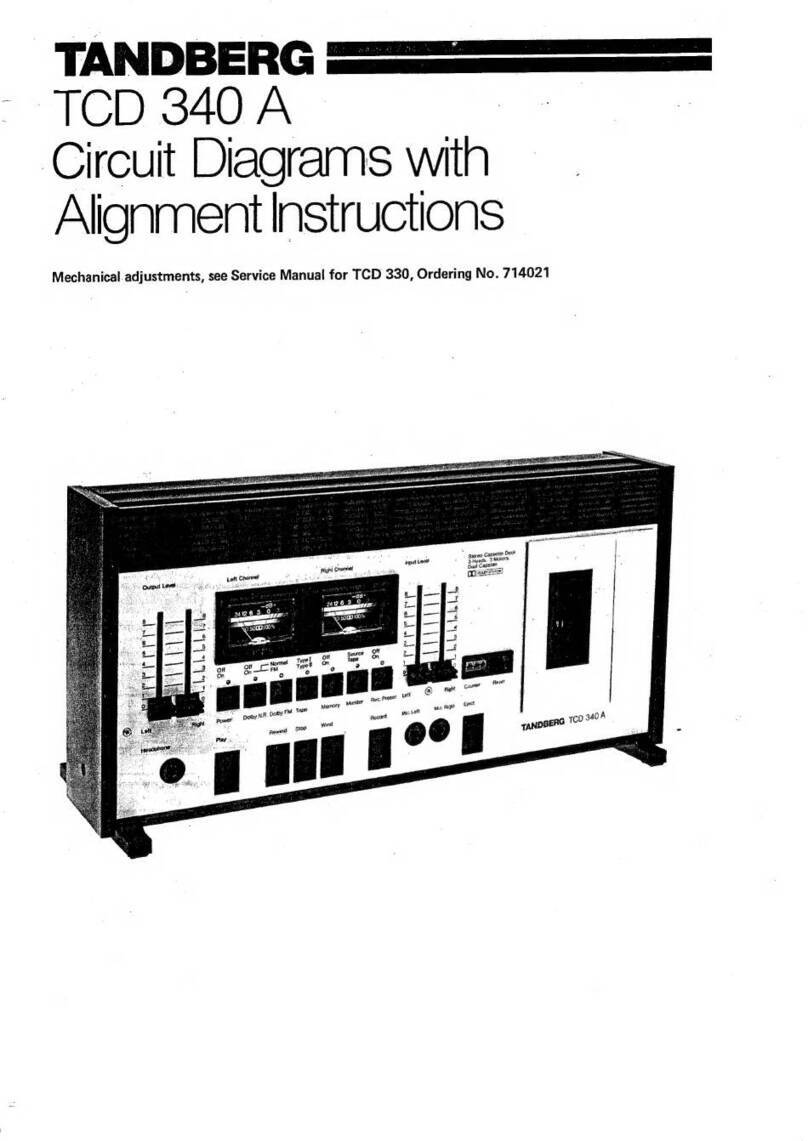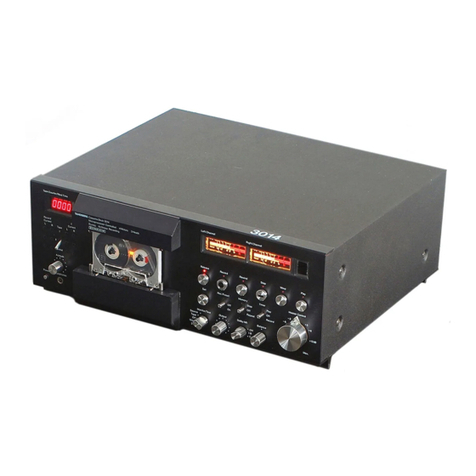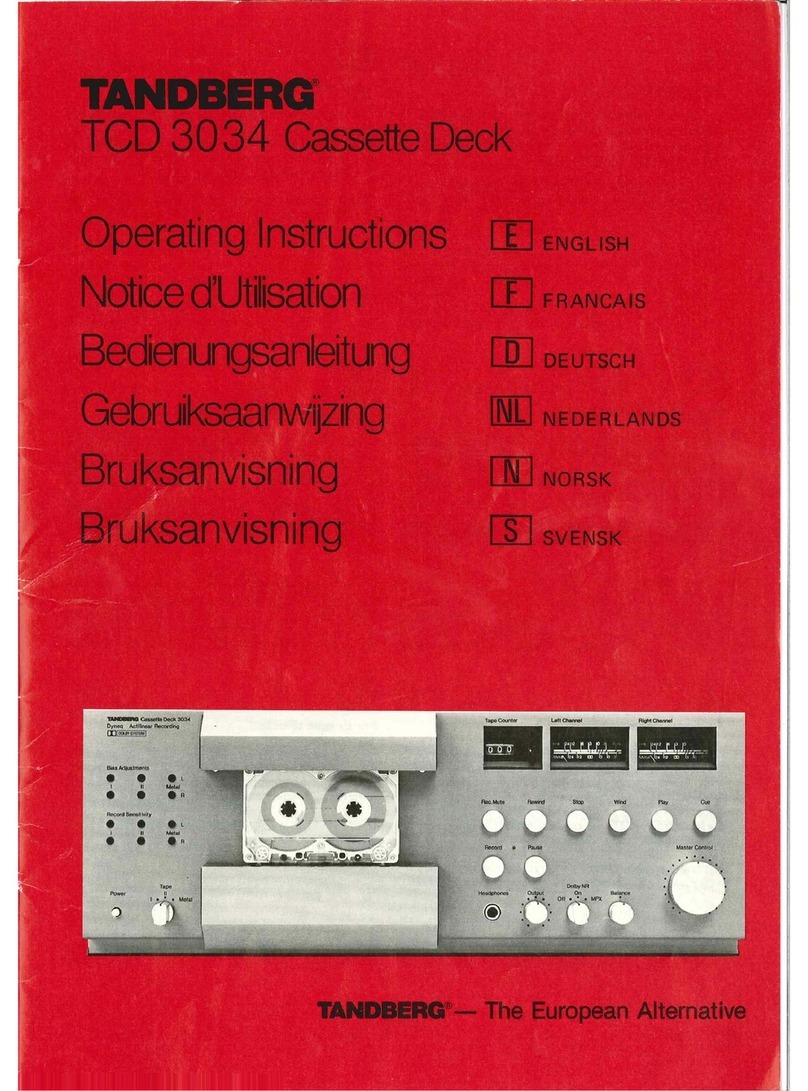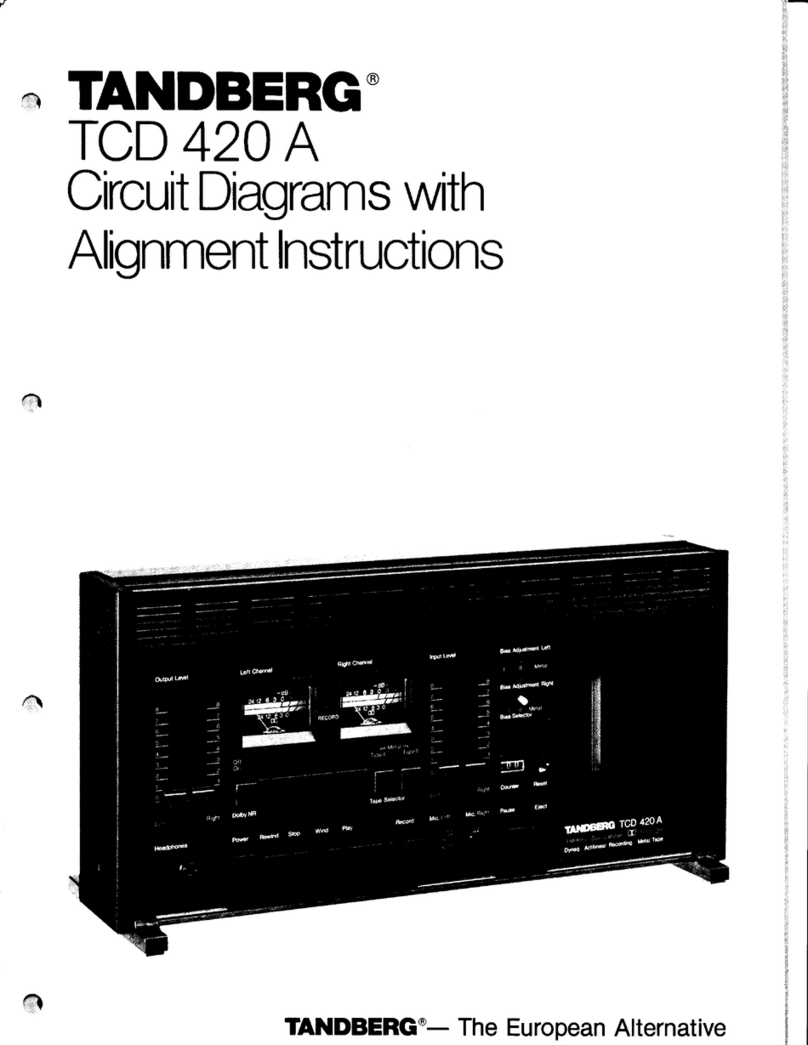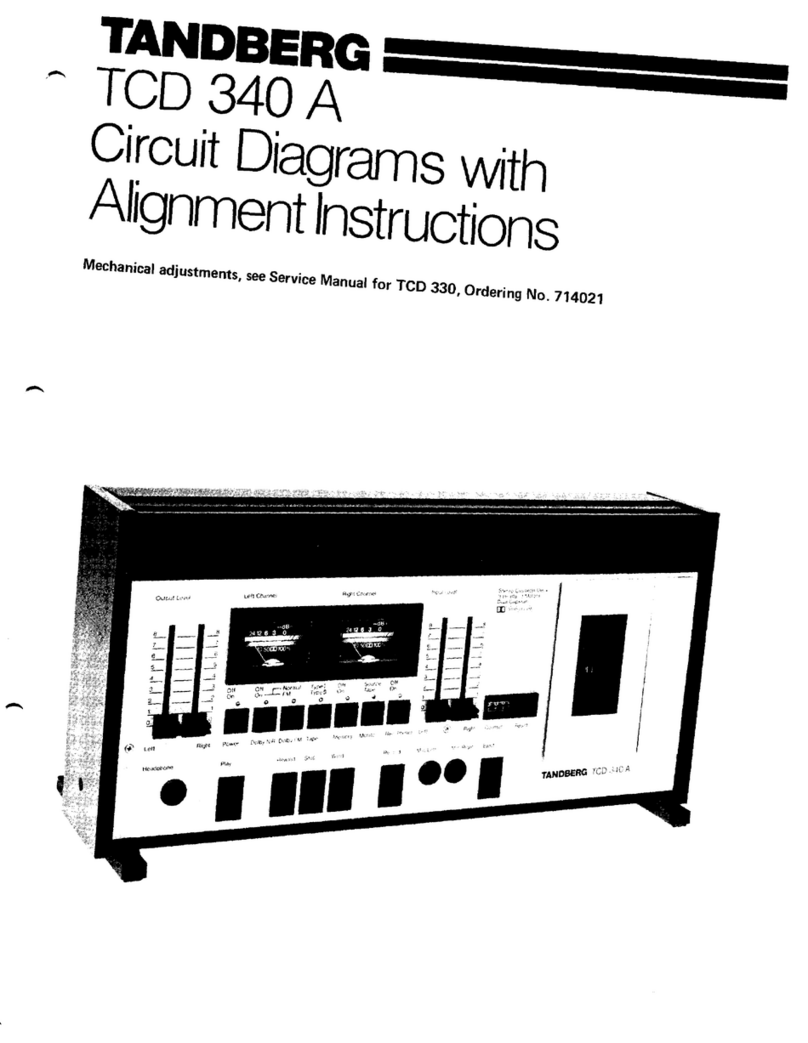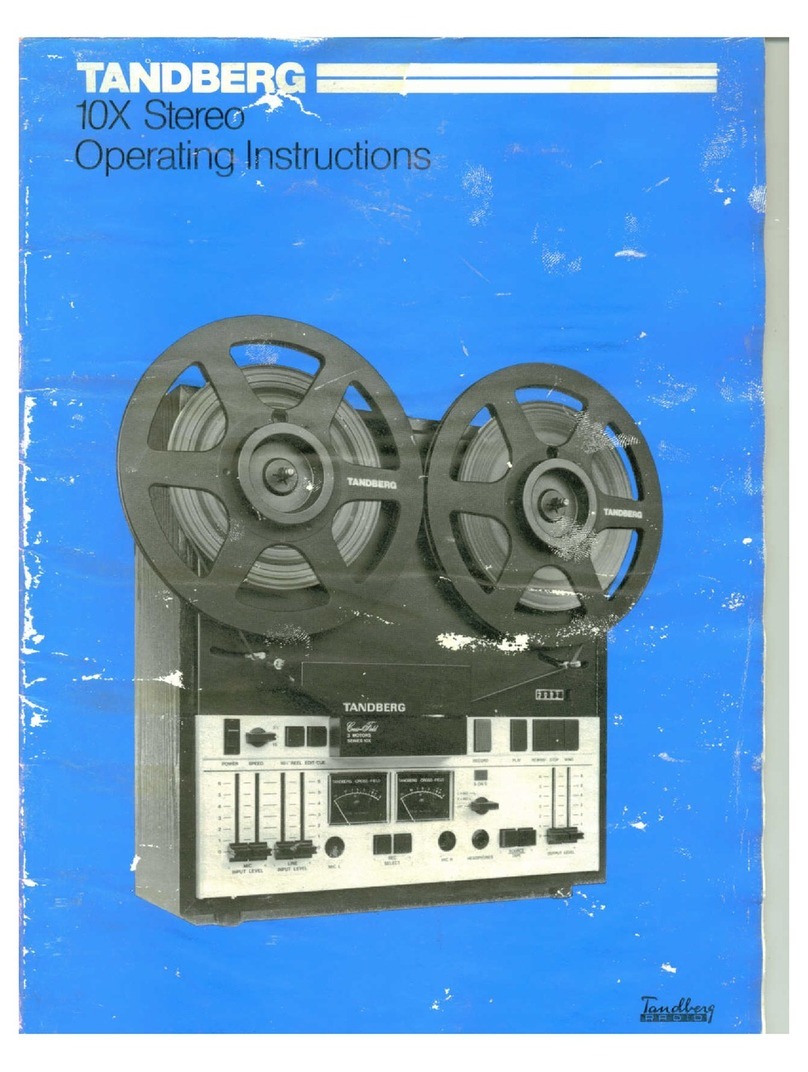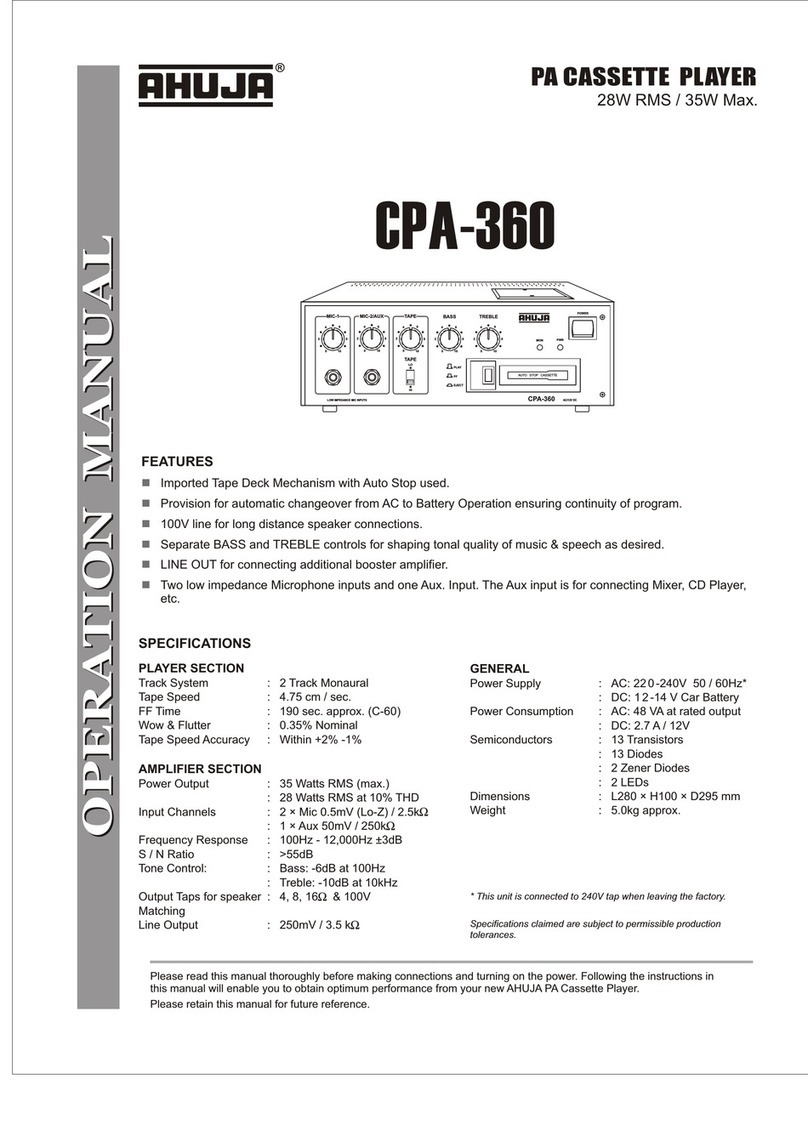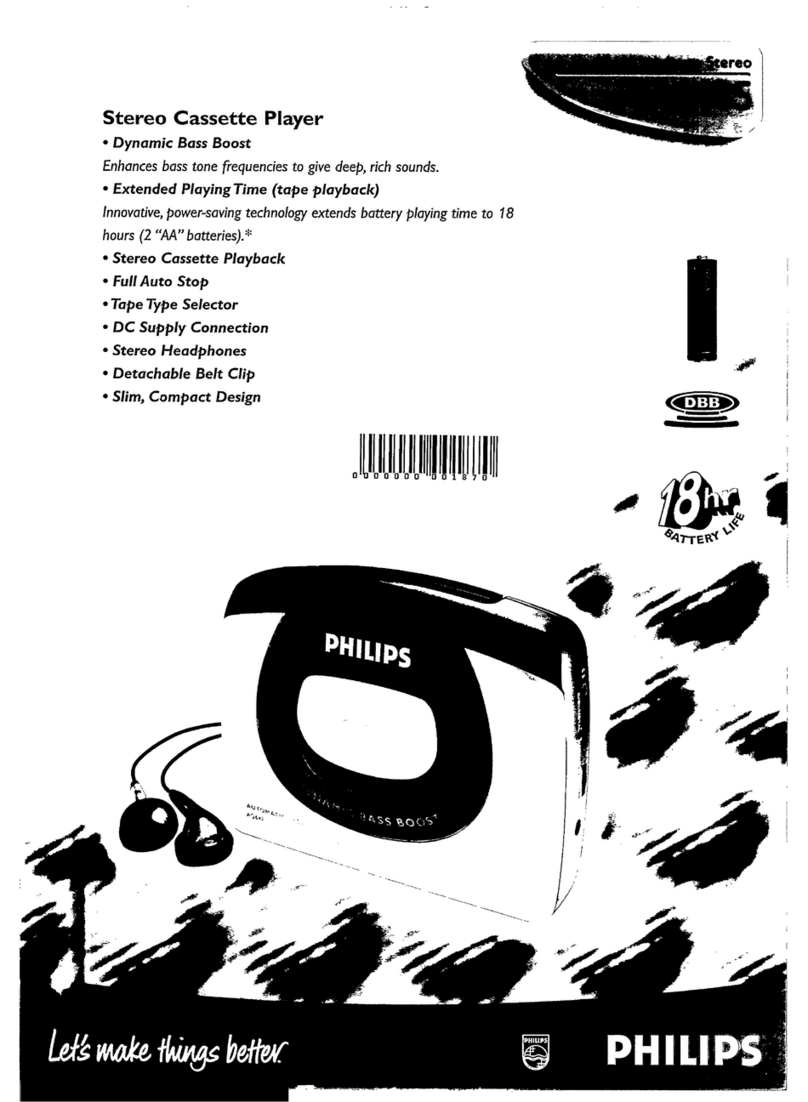--
(?4;
4.0 HEADALIGNMENTWITH TANDBERG
TESTTAPES,MODEL
6041X
4.1Playback
Head
Set the recorder for stereo playback and connect a
VTVM to eachone of the phono outputs.
4.1.1 HeightAdiustment
Play Tandberg test tape No. 1. This is a full track
prerecorded tape with 1.000 Hz recorded at 7 ll2 ips,
and with the area corresponding to track 3 reduced by
approx. 30 dB. Adjust the height of the playback head
by means of the screws (A) until minimum output is
obtained from track 3 (channel R), while endeavourlng
to maintain the headfront parallel to the tape.
4.1.2 Azlmuth Adjustment
Play Tandberg test tape No. 2. This is a full track
prerecorded tape with 10 000 or 15 000 Hz recorded at
7 tl2 ips. Adjust the azimuth position of the playback
head by means of the screw (B), until maximum
indication on the VTVM is obtained.
4.2 Record Head
4.2.1 Height Adiustment by Visual Inspection
Insert a new tape, and start the recorder in normal
forward drive. Check visually that the tape appears to
run parallel with the upper track of the record head, with
a play of approx. 0,1 mm (4 mils). If necessary,
adjust
the height with screws
(C) fig. 3.1, while endeavouring to
maintain the headfront parallel to the tape.
4.2.2Heighl Adiustment by Track Meaurement
Record in stereo, well above normal level, first in one
direction, then in the opposite. Cut off a length of tape
and dip it into a solution of fine grained iron oxyde
powder and alcohol (Magna See). The tracks will then be
visible as four dark stripes with spacingsin lighter shade.
Fig.6.1 shows the correct pattern on the tape and the
patterns obtained when the head is positioned either too
high or too low.
Adjust as above and perform a new track measurement.
4.2.3 Azimuth Adiustment
Load a new tape into the tape recorder and record at
tape speed 7 Ll2 ips, a 15 000 Hz signal in stereo.
Depress
both playback buttons and turn both playback
volume potentiometers to maximum. Adjust both Line
Record l,evel knobs for approx. 150 mV at the outputs.
Adjust the record head azimuth screw for maximum
output from both channels simultaneously or best
compromise.
4.3
Bias
Head
4.3.1 Vertical Adiustment
Move the operating lever slowly to the normal forward
drive position and check that the head fronts of bias-and
record heads are parallel. If necessary, bend the arm of
the biasheadasrequired.
4.3.2 HeightAdjustment
Set the tape recorder in record mode, and unscrew the
locking screw (H) fig. 3.1, about 1/2 turn. Connect a
VTVM acrosseach one of the record head halves.Move
the bias head up or down by means
of adjustment screw
M for the highest possible reading on the voltmeter.
Check that the tape runs freely in the groovein front of
the bias head and that there is sufficient clearance
between the bias head and the mounting plate for the
record head. The height position of the bias head is not
critical, and if the clearance between the bias head and
the mounting plate for the record head is insufficient,
raisethe biashead slightly.
4.3.3 Horizontal Adjustment
Connect a VTVM across each one of the record
headhalves, and set the tape recorder for stereo record-
ing. Insert a screwdriver in groove I, ref. fig. 3.1, and pull
the bias head to the right.
Then pull the bias head carefully by means of the
screwdriver towards the left hand side.
Induced voltage (bias) in recording head increasesto a
maximum. Continue pulling the head towards left side
until the bias is reduced by 10-15 7o
below maximum.
When the position has been found, thigthen the screw
(H) while maintaining correct horizontal position of the
head. Then recheck the output voltage. If a noticeable
change has occured, the horizontal procedure has to be
repeated.
4.4EraseHead
4.4.1 Height Adjustment
By visual inspection, check that approx. 0,25 mm (10
mils) of the upper half of the erasehead isvisible above
the tape. Insert Tandberg test tape No. 9 and record a
4OO Hz signal at 7 Ll2 ips well above normal level on
channel R (track 3). Dip the tape in a solution of fine
grained iron oxyde powder and alcohol (Magna See
solution). Check that the recorded track is positioned in
centre of the erasedtrack. Make surethat no parts of the
adjacent tracks are erased, see fig. 6.2. If necessary,
adjust the height of the erase head by means of the
screws (K) and (L) ref. fig. 3.1, and repeat the above
check.
4.4.2 Azimuth Adlustment
Check that the head front of the erase head is
perpendicular to the mounting plate. If necessar5r,
adjust
azimuth position by meansof the screws
(K) ref. fig. 3.1.
This adjustment is not critical.
4.5Model6021X
The alignments specified in para. 4.0 are valid for the
model 6021X with the exception of paragraph 4.1.1,
which is supensededby 5.1.1 and paragraph4.2.1, which
issuperseded
by 6.2.2.
$'rF
D{^
